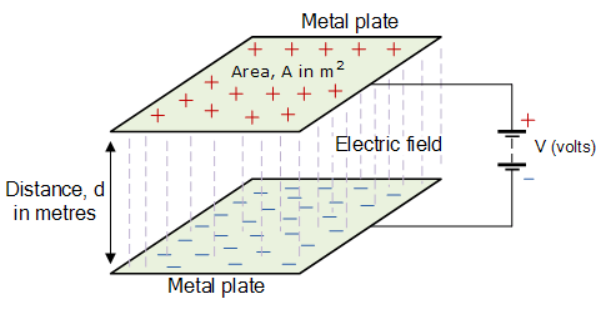Sport-Jan2026
Playing sports in winter offers many physical, mental, and social benefits — even though the cold might make it tempting to stay indoors. Here are some key advantages:🧠 Mental & Emotional Benefits💪 Physical Health Benefits🌿 Lifestyle & Social Benefits
- Combats winter blues: Physical activity boosts endorphins and serotonin, helping to fight seasonal affective disorder (SAD) and improve mood.
- Reduces stress: Exercise helps lower cortisol levels and promotes relaxation.
- Enhances focus and energy: Staying active improves blood circulation and mental clarity, preventing the sluggishness that often comes with colder months.
- Boosts immunity: Regular exercise strengthens the immune system, making you more resilient to colds and flu.
- Improves cardiovascular health: Cold weather makes your heart work a bit harder, providing a stronger workout for your cardiovascular system.
- Burns more calories: Your body burns extra energy to stay warm, making winter sports like skiing, snowboarding, or running more calorie-intensive.
- Strengthens muscles and joints: Activities like ice skating, snowshoeing, or hockey build balance, core strength, and coordination.
- Encourages outdoor activity: Spending time outside helps you get natural light and vitamin D, even in winter.
- Builds social connections: Many winter sports are community-based (e.g., skiing groups, indoor soccer leagues), which helps prevent isolation.
- Boosts discipline and resilience: Training in less comfortable conditions strengthens mental toughness and consistency.
“Wellness programs” generally refer to structured initiatives designed to improve and maintain the health and well-being of individuals—often in workplaces, schools, communities, or wellness centers.
Here’s a quick breakdown depending on context:🧘♀️ Corporate / Workplace Wellness Programs
Focus: Improve employee health, reduce stress, and boost productivity.
Examples:🌿 Community or Public Wellness Programs
- Fitness challenges or gym memberships
- Stress management workshops
- Nutrition and healthy eating sessions
- Mental health resources and counseling
- Health screenings (blood pressure, BMI, etc.)
Focus: Encourage healthy lifestyles for the general public.
Examples:🩺 Clinical or Healthcare-Based Wellness Programs
- Free yoga or walking clubs
- Smoking cessation programs
- Health fairs or community fitness events
- Preventive health education
Focus: Help individuals manage or prevent chronic conditions.
Examples:💆♀️ Holistic or Lifestyle Wellness Programs
- Diabetes prevention programs
- Cardiac rehabilitation
- Weight management and nutrition support
Focus: Mind-body balance and overall life satisfaction.
Examples:
- Meditation and mindfulness workshops
- Spa retreats and detox programs
- Life coaching or emotional wellness sessions
- Sleep improvement plans
Would you like me to tailor a list of wellness program ideas for a specific purpose—like for your website (living-and-money.com), or for a corporate audience, or something else?
Here are several fitness challenge ideas, grouped by type and goal — perfect for personal use, social media engagement, or group motivation programs:🏋️♀️ Strength & Muscle Challenges🏃 Cardio & Endurance Challenges🧘 Wellness & Mind-Body Challenges🥗 Lifestyle & Transformation Challenges
- 30-Day Push-Up Challenge – Start with 10 push-ups a day and increase by 2 daily.
- Squat Challenge – 100 squats per day for 30 days (break into sets if needed).
- Plank Challenge – Start at 20 seconds and add 10 seconds each day.
- Full-Body Challenge – Rotate between upper, lower, and core workouts daily for 4 weeks.
- Bodyweight Circuit Challenge – Set a 15-minute timer and repeat a circuit (push-ups, squats, sit-ups) as many rounds as possible.
- 5K in 4 Weeks – Follow a progressive running plan to reach 5K distance.
- 10,000 Steps a Day Challenge – Track daily steps with a smartwatch or app.
- Jump Rope Challenge – 100 skips a day, increasing by 50 each week.
- HIIT Challenge – 20-minute high-intensity workouts, 5 days a week for a month.
- Cycling Challenge – Cover 100 miles (or km) total in a month.
- 30-Day Yoga Flow – A new 10–20 min yoga session daily.
- Meditation & Stretch Challenge – 10 minutes of mindful movement and breathing each morning.
- Sleep Reset Challenge – Commit to 8 hours of sleep nightly for 30 days.
- Hydration Challenge – Drink 2–3 liters of water every day.
- No Sugar Challenge – Eliminate added sugars for one month.
- 75 Hard (modified) – 75 days of workout, clean eating, reading, and hydration.
- Clean Eating Challenge – Cook all meals at home for 30 days.
- Daily Habit Challenge – Pick one health habit (e.g., 10k steps, morning workout, no alcohol).
- Accountability Partner Challenge – Pair up and track each other’s goals.
- Weekend Warrior Challenge – Every weekend, complete one long workout or outdoor adventure.
Boosting your immunity involves supporting your body’s natural defenses through a combination of nutrition, lifestyle habits, and stress management. Here’s a clear breakdown of the most effective, science-backed ways to strengthen your immune system:🥗 1. Eat a Nutrient-Rich Diet
Your immune cells need a variety of nutrients to function properly.💧 2. Stay Hydrated😴 3. Get Quality Sleep🏋️♀️ 4. Exercise Regularly🧘♂️ 5. Manage Stress🚭 6. Avoid Smoking and Limit Alcohol☀️ 7. Get Sunlight or Vitamin D🧄 8. Natural Immunity Boosters
- Vitamin C – Found in citrus fruits, bell peppers, kiwi, broccoli.
- Vitamin D – From sunlight, fortified foods, or supplements.
- Zinc – In nuts, seeds, beans, and shellfish.
- Vitamin A – From carrots, sweet potatoes, spinach.
- Protein – From lean meats, eggs, legumes, and tofu (vital for antibody production).
- Probiotics – Yogurt, kefir, kimchi, sauerkraut, or probiotic supplements to support gut health.
- Water helps flush toxins and keeps your mucous membranes moist—your body’s first line of defense.
- Aim for 2–3 liters (8–12 cups) daily, more if you exercise or live in a hot climate.
- Your immune system recharges during deep sleep.
- Aim for 7–9 hours per night.
- Try to maintain consistent sleep and wake times.
- Moderate exercise (like brisk walking, cycling, or yoga) boosts circulation and immune cell activity.
- Aim for 30 minutes per day, 5 days per week.
- Avoid overtraining, which can temporarily weaken immunity.
- Chronic stress raises cortisol, which suppresses immune response.
- Techniques that help: meditation, deep breathing, nature walks, journaling, or simply unplugging from screens for a while.
- Smoking damages lung tissues and impairs immune defense.
- Excess alcohol disrupts gut balance and weakens immune cell function.
- If you drink, stay moderate: up to 1 drink/day for women, 2 for men.
- Sunlight triggers vitamin D production, crucial for immune balance.
- Aim for 10–20 minutes of sun exposure on skin a few times per week (depending on skin tone and location).
- If sun is limited, take a vitamin D3 supplement (consult your doctor for dosage).
Certain foods and herbs may enhance immune response:❤️ 9. Keep a Healthy Weight🧴 10. Practice Good Hygiene
- Garlic – Has antiviral and antibacterial properties.
- Ginger – Reduces inflammation and supports circulation.
- Turmeric (Curcumin) – Powerful anti-inflammatory.
- Green tea – Rich in antioxidants (EGCG).
- Mushrooms (like reishi or shiitake) – Support immune modulation.
- Obesity can weaken immunity and increase inflammation.
- Balanced diet + activity helps maintain immune balance.
- Wash hands regularly.
- Avoid touching your face unnecessarily.
- Keep vaccinations up to date (e.g., flu shot, COVID booster).
Would you like me to create a daily routine or meal plan specifically designed to boost immunity?
Stress management refers to techniques and strategies used to reduce and control the physical and emotional tension caused by stress. Effective stress management helps improve mental clarity, emotional stability, productivity, and overall well-being.
Here’s a concise breakdown:🧠 Understanding Stress
Stress is your body’s response to pressure or challenges. It can be:🌿 Effective Stress Management Techniques1. Physical Strategies2. Mental & Emotional Techniques3. Time & Lifestyle Management4. Social & Supportive Strategies💡 Quick Stress Relievers
- Acute: Short-term (e.g., an upcoming deadline)
- Chronic: Long-term (e.g., ongoing financial or relationship issues)
- Exercise regularly: Walking, yoga, or swimming releases endorphins that boost mood.
- Sleep well: Aim for 7–9 hours per night.
- Eat a balanced diet: Reduce caffeine, sugar, and processed foods.
- Mindfulness & meditation: Helps calm racing thoughts and increases focus.
- Deep breathing exercises: Try the 4-7-8 technique (inhale 4s, hold 7s, exhale 8s).
- Journaling: Writing about worries can provide clarity and emotional release.
- Prioritize tasks: Use lists or planners to avoid overwhelm.
- Set boundaries: Learn to say no when necessary.
- Take breaks: Step away from work or screens periodically.
- Connect with others: Talking to trusted friends or family helps put problems in perspective.
- Seek professional help: Therapists or counselors can provide structured coping strategies.
- Go outside for fresh air
- Listen to calming music
- Stretch for 5–10 minutes
- Practice gratitude
Would you like me to tailor stress management techniques for a specific context — such as workplace stress, student life, or daily life balance?
Emotional tension caused by stress refers to the psychological strain and discomfort that build up when someone faces prolonged pressure, uncertainty, or overwhelming demands. It’s the emotional response to stress, often felt as inner turmoil or unease.
Here’s a breakdown of what it involves:1. What It Feels Like2. Common Causes3. Physical and Behavioral Signs
- Irritability or mood swings
- Anxiety or restlessness
- Feeling overwhelmed or out of control
- Frustration, anger, or sadness
- Difficulty concentrating or relaxing
- Work pressure or deadlines
- Relationship conflicts
- Financial problems
- Major life changes (e.g., moving, loss, illness)
- Constant exposure to uncertainty or demands
Emotional tension doesn’t stay “just emotional.” It often shows up physically or behaviorally:4. Coping and Relief Strategies
- Muscle tightness or headaches
- Trouble sleeping
- Rapid heartbeat
- Changes in appetite
- Withdrawal from others or increased irritability
- Relaxation techniques: Deep breathing, meditation, yoga
- Physical activity: Regular exercise helps release tension
- Social support: Talking with friends, family, or a counselor
- Time management: Reducing overwhelm by prioritizing
- Mindfulness: Staying present instead of worrying about the future
Would you like me to explain how emotional tension builds up in the body and mind (the biological and psychological mechanisms)?
Emotional tension builds up in the body and mind through a complex interaction between psychological, physiological, and behavioral processes. Here’s a clear breakdown of how it happens:🧠 1. The Emotional Trigger
It all starts with a perceived threat, stressor, or unresolved emotion — something that challenges your sense of safety, control, or belonging.
Examples: conflict, uncertainty, loss, shame, or even overwork.
Your brain’s amygdala (the emotional alarm system) detects this and sends a “danger” signal, even if the threat is not physical.⚡ 2. The Body’s Stress Response
Once the brain perceives danger, the autonomic nervous system (especially the sympathetic branch) activates the fight–flight–freeze response:
- Adrenaline and cortisol flood your system.
- Heart rate and breathing quicken.
- Muscles tense, preparing for action.
- Digestion slows, and focus narrows to the perceived threat.
If the emotion (fear, anger, grief, anxiety) isn’t expressed or resolved, this heightened state doesn’t fully shut off.🩻 3. Physical Accumulation of Tension
When this state persists, the body “remembers” it through chronic muscle tightness, posture changes, and biochemical imbalances.
Common patterns include:
- Neck, shoulder, and jaw tension → linked to unspoken frustration or over-control.
- Chest tightness or shallow breathing → linked to anxiety, grief, or fear.
- Tight hips or lower back pain → linked to suppressed emotions or feeling “stuck.”
Over time, the nervous system becomes hypervigilant — even small stressors can trigger large reactions.💭 4. Mental Loops and Emotional Suppression
Unprocessed emotions can turn into rumination, worry, or self-criticism.
The mind keeps replaying events in an attempt to find closure.
But without physical or emotional release, the cycle reinforces itself:
Stressful thought → tension in the body → physical discomfort → more stress and worry.
This feedback loop keeps the body and mind locked in a state of guardedness.🌊 5. Why It Builds Up Over Time🌬️ 6. Releasing the Build-Up
- Modern life rarely allows full emotional expression (crying, yelling, trembling, resting).
- Many people learn to “cope” by suppressing emotions — staying busy, numbing with screens or substances, or intellectualizing feelings.
- Without release, the nervous system stays half-activated, leading to chronic fatigue, irritability, anxiety, or depression.
Emotional tension can be discharged when body and mind work together again. Common ways include:
- Body-first approaches: deep breathing, shaking, yoga, massage, stretching, mindful movement.
- Mind-first approaches: journaling, therapy, meditation, emotional naming, and self-compassion.
- Integrative approaches: breathwork, trauma release exercises, somatic experiencing, or creative expression.
The key is allowing awareness, safety, and movement — so the body can complete the stress cycle it started.
Would you like me to explain this process through the lens of neuroscience (hormones, brain regions, and nervous system balance) or through somatic psychology (how emotions live and move in the body)?








